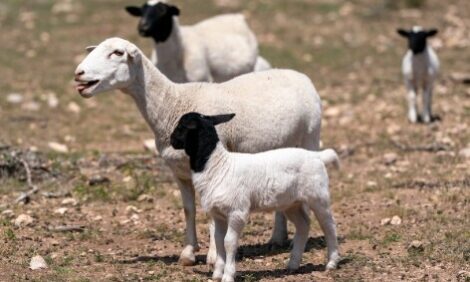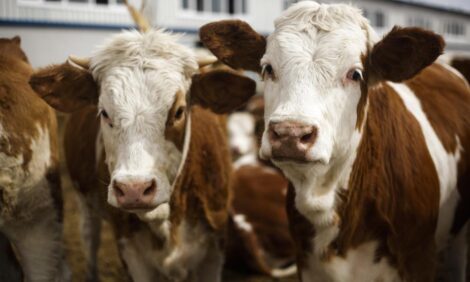



Researchers to explore how Canada’s grasslands could store more carbon
Genomic tools help researchers understand how grazing management influences carbon cycling and measure indicators of changing emissions in cattle and soilA University of Alberta-led interdisciplinary team is launching a research project with the goal to store 32.5 Mega tonnes of carbon in the ground through grazing management techniques and genomic tools.
“Evidence suggests that the grasslands of Canada are undersaturated with carbon and have the potential to store more carbon than they currently do,” says James Cahill, professor in the Faculty of Science and co-lead of the Climate Action Through Grazing project, which received $6.2 million in new funding.
The project, co-led by Carolyn Fitzsimmons, a bovine genetics researcher with Agriculture and Agri-Food Canada and the U of Alberta’s Faculty of Agricultural, Life & Environmental Sciences, and project manager Elda Dervishi, will start by identifying how grazing management alters the functioning of agricultural communities and how that is linked to changes in greenhouse gas emissions measured in soil and cattle.

Fitzsimmons says if cattle can be used in ways that are economically viable and accelerate carbon storage, the impact on Canada’s net carbon emissions could be significant.
“In carbon cycling or carbon sequestration you have to measure what happens in the soil, what happens in the animal, what happens to the waste that animal produces and how it fits in that carbon cycling system,” she says.
“It's natural that we need people in all of these different areas to do this type of project.”
Assessing cattle grazing methods
Cattle produce methane that accounts for about 3.6% of Canada’s total greenhouse gas emissions, and their fecal matter influences grassland soil microbiomes that affect carbon storage, Fitzsimmons notes.
To measure the methane cattle produce and its impact on soil, the research team will compare two grazing techniques — continuous grazing and adaptive multi-paddock grazing — with the theory that adaptive multi-paddock grazing might improve carbon storage in grasslands.
“We really want to contrast those two treatments, because even if we see improved carbon sequestration with adaptive multi-paddock grazing, there might be an increase in enteric methane production, which is the cattle’s greenhouse gas output.”
“If this is the case, then in the total sum of the system we’re actually creating more greenhouse gas than we’re sequestering, which is not what we want to do,” says Fitzsimmons.
The researchers will also study production measurements such as growth and output from cows to take into account the economic and environmental impact on farmers and landowners.
“This issue is not just carbon, it is the maintenance of grasslands as well, which is one of the most endangered ecosystems in Canada,”says Fitzsimmons.
Developing faster measures of progress
The research team, comprising 33 researchers and academics from the U of A, Agriculture and Agri-Food Canada and the University of Saskatchewan, will also use genomic tools to collect soil data and use it to develop rapid “bioindicators” of carbon cycling — measures that show whether shifts are happening in the microbial community and whether those changes will reduce greenhouse gas emissions or methane production.
“Grasslands provide excellent carbon storage because the carbon gets stored in the soil and it tends to get stored as what we call necromass, which is dead microbes,” says Cahill. “Those dead microbes, like bacteria and fungi, are so small that they are really tightly bound to the soil so the carbon persists for centuries.”
Rapid bioindicators can provide carbon markets with a critical tool for identifying positive action on climate management — a process that’s currently slow according to Cahill, placing a limit on implementing carbon markets in agricultural systems.
“We’re hoping by identifying robust bioindicators, we can show emissions are going in the right direction, which can be incorporated into carbon markets or incentive programs,” says Cahill.
A large social science component of the project will also explore the economic viability of research work, with the researchers and policy makers working together to introduce the use of bioindicators in a way that is economically viable, Cahill notes.
“We have to do good for the people who are running these operations.”
The project is supported by funding and in-kind contributions from Genome Canada, Results Driven Agriculture Research and Agriculture and Agri-Food Canada’s Living Laboratories Initiative.


